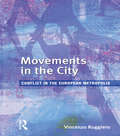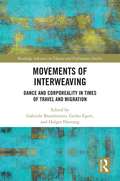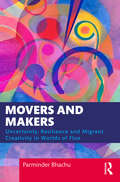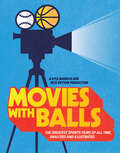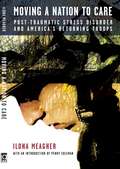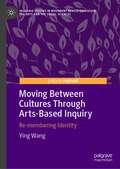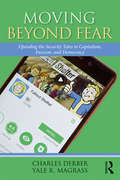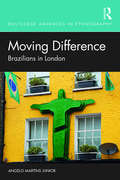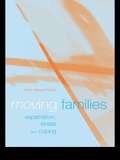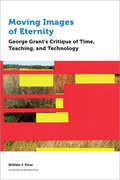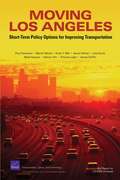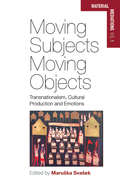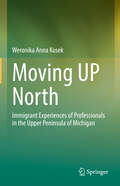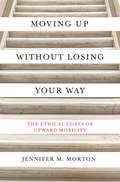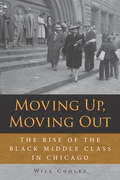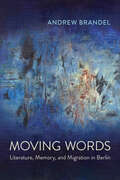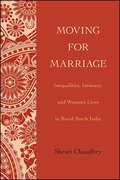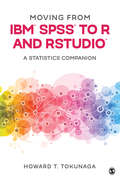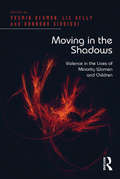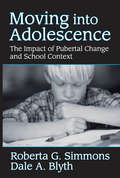- Table View
- List View
Movements for Human Rights: Locally and Globally
by David L. Brunsma, Keri E. Iyall Smith and Brian K. GranHow do people work together to advance human rights? Do people form groups to prevent human rights from being enforced? Why? In what ways do circumstances matter to the work of individuals collectively working to shape human rights practices? Human society is made of individuals within contexts—tectonic plates not of the earth’s crust but of groups and individuals who scrape and shift as we bump along, competing for scarce resources and getting along. These movements, large and small, are the products of actions individuals take in communities, within families and legal structures. These individuals are able to live longer, yet continue to remain vulnerable to dangers arising from the environment, substances, struggles for power, and a failure to understand that in most ways we are the same as our neighbors. Yet it is because we live together in layers of diverse communities that we want our ability to speak to be unhindered by others, use spirituality to help us understand ourselves and others, possess a space and objects that are ours alone, and join with groups that share our values and interests, including circumstances where we do not know who our fellow neighbor is. For this reason sociologists have identified the importance of movements and change in human societies. When we collaborate in groups, individuals can change the contours of their daily lives. Within this book you will find the building blocks for human rights in our communities. To understand why sometimes we enjoy human rights and other times we experience vulnerability and risk, sociologists seek to understand the individual within her context. Bringing together prominent sociologists to grapple with these questions, Movements for Human Rights: Locally and Globally, offers insights into the ways that people move for (and against) human rights.
Movements in the City: Conflict in the European Metropolis
by Vincenzo RuggieroFor 2nd and 3rd year courses in urban sociology, sociology of exclusion, social stratification, planning and cultural studies in departments of sociology and urban geography. This book provides an in depth examination of social movements and urban life in European cities today. Unique in its interdisciplinary approach, it covers traditional areas of urban studies, sociological concerns about the concept of change and the characteristics of social movements. It presents current theory as well as discursive sections based around empirical work conducted in major European cities including London, Paris and Berlin.
Movements of Interweaving: Dance and Corporeality in Times of Travel and Migration (Routledge Advances in Theatre & Performance Studies)
by Gabriele Brandstetter Gerko Egert Holger HartungMovements of Interweaving is a rich collection of essays exploring the concept of interweaving performance cultures in the realms of movement, dance, and corporeality. Focusing on dance performances as well as on scenarios of cultural movements on a global scale, it not only challenges the concept of intercultural dance performances, but through its innovative approach also calls attention to the specific qualities of "interweaving" as a form of movement itself. Divided into four sections, this volume features an international team of scholars together developing a new critical perspective on the cultural practices of movement, travel and migration in and beyond dance.
Movers and Makers: Uncertainty, Resilience and Migrant Creativity in Worlds of Flux
by Parminder BhachuWe live in times of extreme change. There could be no better time than now to interrogate the lives of new kinds of people, movers and makers, who navigate fragility and uncertainty to create with daring, often against great odds. Parminder Bhachu uses their dramatic life stories to uncover what makes for creativity and resilience in times of disequilibrium. What can be learnt from their creative moxie as innovators outside establishment powers? Why has their creative reach grown exponentially in our globally connected twenty-first century? How have their abilities to innovate been catalyzed without subscription to knowledge hierarchies and monopolies? These culturally dexterous movers who possess movement capital, advanced with every migration, have translated ancient maker and craft skills into transforming modern technology, science, design, architecture, and the arts. Generous, inclusive, and deeply collaborative, they are at the heart of open source sharing for collective intelligence, the common good, and the maker movement. They invigorate the economies they reside in greatly enhancing creative capacities and reach. Bhachu, herself a multiple-migrant maker, offers us a model for a hopeful way forward, bringing her unique ethnographic insights to illuminate what can be learnt about thriving in worlds of flux.
Movies with Balls: The Greatest Sports Films of All Time, Analyzed and Illustrated
by Kyle Bandujo Rick BrysonFeaturing original illustrations of fantasy memorabilia, ticket stubs, and playmaps, Movies with Balls will make you want to rewatch the movies you already love, and discover gems you&’ve never seen. Play ball!If you&’re the kind of fan who cheers every single time you watch Rocky beat Drago, or remembers who said &“Be the ball, Danny&” and &“If you build it, he will come,&” this is the book for you.Movies with Balls celebrates and analyzes more than two dozen of the greatest sports films of all time, with expert play-by-play and color commentary on the movies themselves and the athleticism they portray. You&’ll be transported into fictional arenas, stadiums, gyms, fields, and golf courses to relive the climactic moments from: CaddyshackThe NaturalField of DreamsDodgeballThe Karate KidRocky IVThe WaterboyBend it Like BeckhamCreedAnd many more!
Moving A Nation to Care
by Ilona Meagher Robert RoerichPost-traumatic stress disorder (PTSD) in our returning combat troops is one of the most catastrophic issues confronting our nation. Yet, despite the fact that nearly 20 percent of the over half million troops that have left the military since 2003 have been diagnosed with PTSD, and that many who suffer symptoms are unlikely to seek help because of the stigma of this terrible disease, our government and media have remained silent. Moving A Nation to Care: Post-Traumatic Stress Disorder and America's Returning Troops is a grassroots call to action designed to break the shameful silence and put the issue of PTSD in our returning troops front and center before the American public. In addition to presenting interviews with Iraq and Afghanistan veterans suffering with PTSD, such as Blake Miller, the famous "Marlboro Man," this book will be the most comprehensive resource to date for concerned citizens who want to understand the complex political, social, and health-related issues of PTSD, with an eye toward "moving our nation to care" to do what is necessary to help our fighting men and women who suffer from PTSD. Ilona Meagher is editor of the online journal PTSD Combat: Winning the War Within and author of the PTSD Timeline, a comprehensive database of PTSD incidents. She has appeared on Fox News and numerous other media outlets. Robert Roerich, MD, is one of the world experts in trauma therapy and PTSD and a board member of the National Gulf War Resource Center.
Moving Between Cultures Through Arts-Based Inquiry: Re-membering Identity (Palgrave Studies in Movement across Education, the Arts and the Social Sciences)
by Ying WangThis book is an exploration of the concept of in-betweenness, as it occurs within the process of moving between the author’s root culture and adopted culture, from her perspective as an immigrant creative arts therapist. Through the critical autoethnographic voice and a/r/tographic inquiry, she introduces a unique exploration site within the process of Guqin-making, an ancient Chinese art form. Through the creation of images and poetry, and through Guqin-making and music-making/playing, the book expands the discussion of in-betweenness by re-theorising ancient Chinese philosophical perspectives on harmonic space. This contribution to arts-based research provides a unique standpoint to explore research methods of moving, walking, making, resting and awakening. It showcases how other researchers can transfer the invisible and intangible embodied feelings, memories and emotions arising from moving between two or more cultures into visible and tangible images, narrative, poetry, craft and music-playing to conduct powerful, interdisciplinary arts-based research.
Moving Beyond Fear: Upending the Security Tales in Capitalism, Fascism, and Democracy (Universalizing Resistance)
by Charles Derber Yale R. MagrassWhile security stories often point to real threats, the narratives of leaders are as much about legitimating the power of rulers and the political and economic system that brought them to power. <P><P>Derber and Magrass offer a penetrating examination of this phenomenon across history and types of societies. Their analysis reveals the great irony about security stories: they historically increase insecurity, imperiling citizens and nation. <P><P>In the US today, the contradiction is especially acute, as security stories told by Trump divide US citizens against one another. <P><P> The book builds from an analysis of the extreme dangers of the prevailing security stories to a new paradigm of true security. The authors develop new approaches as our best hope for avoiding catastrophe and creating a socially just society based on real security for a nation and for humans across the planet.
Moving Bodies: Embodied Minds and the World That We Made
by Erik RingmarIncreasingly we have come to live in our heads, leaving our bodies behind. The consequences have been far-reaching, of which cognitive theory has warned us, advocating a 'return to the body.' This book employs several case studies-kings performing in ballets, sea captains dancing with natives, nationalists engaged in gymnastics exercises-to demonstrate what has been lost and what could be gained by a more embodied approach to living, to history. These curious movements were ways to be, to think, to know, to imagine, and to will. They highlight the limits of historical explanations focusing on cultural factors and question currently fashionable 'cultural' and 'post-modern' perspectives. Bodies, cognitive theory tells us, are the same regardless of historical context, and they engage in the same intentional activities. Returning to our bodies and their movements enables us not only to explain historical actions anew, but also to understand ourselves better.
Moving Difference: Brazilians in London (Routledge Advances in Ethnography)
by Angelo Martins JuniorMoving Difference demonstrates how differences between migrants who share the same nationality travel with them and can impact on every aspect of their ‘mobile lives’. Analysing the lived experiences and narratives of Brazilians in London, it adds an in-depth ethnographic understanding of the specific contours of difference to studies of migration by demonstrating how social differences, rooted in colonial legacies, are constantly being re-created and negotiated in the everyday making of the global world. By using ethnographic observations and in-depth interviews, in addition to historical and contextual analyses, the book allows us to understand how people speak of, engage with and negotiate difference in their everyday lives and how this is shaped by the macro-political and -social contexts of immigration and emigration. Giving attention to the complex interrelations between ‘here’ and ‘there’, past and present, this book allows us to go beyond the proliferated homogenised stereotypes of ‘the migrant’ and ‘the migrant community’ often reproduced by academics as well as by the media and politicians, whether with a view to pathologising or romanticising the ‘migrant other’. This title will appeal to students, scholars, community workers and general readers interested in migration, social class, gender, ‘race’ and ethnicity, colonialism and slavery, social exclusion, globalisation and urban sociology.
Moving Families: Expatriation, Stress and Coping
by Mary Haour-KnipeThis study is a detailed exploration of how families cope both individually and as structures with the stresses of moving to a new culture. Through rich interviews conducted over a period of two years, Mary Haour-Knipe shows the processes of change and adjustment at work. As the world of work becomes increasingly a global one, employees of governments, companies and non-commercial organisations increasingly find themselves obliged to live abroad for years at a time, uprooting their families from jobs, schools and support networks in the process. The author's findings will be of interest to students of wider issues of migration and to those who study the family under pressure.
Moving Histories of Class and Community
by Ben Rogaly Becky TaylorA major new study of white working class Britain since 1930, that shows how meanings of poverty have changed over time and how individuals reject categorization by the state. This book challenges accepted wisdom on the white working class, providing new understandings of community, place and class, arguing for the importance of migration.
Moving Images of Eternity: George Grant’s Critique of Time, Teaching, and Technology (Education)
by William F. PinarWilliam F. Pinar presents a comprehensive and original study that demonstrates the significance and pertinence of the scholarship of George Grant for teaching today. While there are studies of Grant’s political philosophy, there has been no sustained study of his teaching. Pinar not only draws upon the collected works; he has also consulted Grant’s PhD thesis at Oxford, as well as the philosopher’s biography, collected letters, and the vast secondary literature. What emerges is a treatise that reveals Grant’s timeliness and his prescience in identifying and critiquing key educational issues nearly half a century ago, from academic vocationalism and educational technology to privatization and the ascendency of research—issues that are eminently relevant today. Beyond the classroom, Grant’s concerns extended to the impact of economic globalization which, he feared, would erase distinctive national histories and cultures. As such, Grant foresaw the current issues of right-wing populism, notably in the UK and the US, as reactions against these historical tendencies. This volume is destined to become an indispensable reference work for students of Grant in particular and for students of education in general. This book is published in English. - S’il existe des études portant sur la philosophie politique et la théologie de George Grant, il n’y avait jusqu’à maintenant aucune étude soutenue sur son enseignement et, plus précisément, sur la relation de son approche pédagogique à celles-ci. Aucune étude ne puisait de façon aussi poussée à l’œuvre complète – y compris à ses présentations aux enseignants et à sa thèse doctorale d’Oxford en philosophie – ou à sa biographie, sa correspondance, et la vaste littérature secondaire. Conçu comme livre de référence pour les adeptes de Grant de même que comme un manuel pour les étudiants en éducation, cet ouvrage arrive à point nommé. Pinar souligne la prescience de Grant, qui identifiait et critiquait il y a déjà cinquante ans des questions d’ordre éducationnel – vocation académique, technologie pédagogique, privatisation de l’enseignement, ascendance de la recherche sur l’enseignement – qui sont d’actualité. Grant était aussi préoccupé par le destin de ce qu’il appelait la particularité au Canada et à l’étranger, et s’inquiétait que la mondialisation économique effacerait les histoires et cultures nationales distinctives. Un état mondial, universel et homogène les remplacerait, ce qui représenterait la pire tyrannie infligée à l’humanité. Grant avait vu venir le populisme de droite que l’on voit actuellement prendre prise notamment au Royaume-Uni et aux États-Unis, comme réaction à ces tendances historiques. Ce livre est publié en anglais.
Moving Los Angeles: Short-term Policy Options for Improving Transportation
by Endy Y. Min Martin Wachs Liisa Ecola Paul Sorensen Aaron KofnerLos Angeles has the worst traffic congestion in the country. Excessive traffic congestion detracts from quality of life, is economically wasteful and environmentally damaging, and exacerbates social-justice concerns. The authors of this book recommend strategies for reducing congestion in Los Angeles County that could be implemented and produce significant improvements within about five years.
Moving Subjects, Moving Objects
by Maruška SvašekIn recent years an increasing number of scholars have incorporated a focus on emotions in their theories of material culture, transnationalism and globalization, and this book aims to contribute to this field of inquiry. It examines how 'emotions' can be theorized, and serves as a useful analytical tool for understanding the interrelated mobility of humans, objects and images. Ethnographically rich, and theoretically grounded case studies offer new perspectives on the relations between migration, material culture and emotions. While some chapters address the many different ways in which migrants and migrant artists express their emotions through objects and images in transnational contexts, other chapters focus on how particular works of art, everyday objects and artefacts can evoke feelings specific to particular migrant groups and communities. Case studies also analyse how artists, academics and policy makers can stimulate positive interaction between migrants and non-migrant communities.
Moving UP North: Immigrant Experiences of Professionals in the Upper Peninsula of Michigan
by Weronika Anna KusekThis monograph presents the migratory journey and personal experiences of immigrant professionals who live and work in the Upper Peninsula of Michigan – a remote region of the United States which heavily relies on a group of professional immigrants to provide various services to the local community. Professors, physicians, engineers, remote workers but also foreign spouses of local residents tell their stories and provide a unique perspective on assimilation, cultural adjustment, and making home away from home. Transnational migrants transcend national boundaries in search of better educational, professional, and/ or personal opportunities and experiences. In the United States, most current research focuses on chain migration and more specifically laborers and/or undocumented immigrants mainly in urban area contexts. There has also been vast literature that focuses on socio-economic polarization in the context of global elites who influence urban areas. But little attention has been given to professional immigrants who settle in small towns and rural areas of the United States especially in the North. The book is composed of 12 chapters: in addition to introductory and summary chapters, ten chapters are focused on individual experiences of international professionals. The chapters tell a story of transnational immigrants who live and work in the Upper Peninsula of Michigan. Each chapter is based on an interview with an international professional who lives in the region: some of the immigrants have been in the area for a couple of decades and others are newcomers.
Moving Up without Losing Your Way: The Ethical Costs of Upward Mobility
by Jennifer MortonThe ethical and emotional tolls paid by disadvantaged college students seeking upward mobility and what educators can do to help these students flourishUpward mobility through the path of higher education has been an article of faith for generations of working-class, low-income, and immigrant college students. While we know this path usually entails financial sacrifices and hard work, very little attention has been paid to the deep personal compromises such students have to make as they enter worlds vastly different from their own. Measuring the true cost of higher education for those from disadvantaged backgrounds, Moving Up without Losing Your Way looks at the ethical dilemmas of upward mobility—the broken ties with family and friends, the severed connections with former communities, and the loss of identity—faced by students as they strive to earn a successful place in society.Drawing upon philosophy, social science, personal stories, and interviews, Jennifer Morton reframes the college experience, factoring in not just educational and career opportunities but also essential relationships with family, friends, and community. Finding that student strivers tend to give up the latter for the former, negating their sense of self, Morton seeks to reverse this course. She urges educators to empower students with a new narrative of upward mobility—one that honestly situates ethical costs in historical, social, and economic contexts and that allows students to make informed decisions for themselves.A powerful work with practical implications, Moving Up without Losing Your Way paves a hopeful road so that students might achieve social mobility while retaining their best selves.
Moving Up, Moving Out: The Rise of the Black Middle Class in Chicago
by Will CooleyIn Moving Up, Moving Out, Will Cooley discusses the damage racism and discrimination have exacted on black Chicagoans in the twentieth century, while accentuating the resilience of upwardly-mobile African Americans. Cooley examines how class differences created fissures in the black community and produced quandaries for black Chicagoans interested in racial welfare. While black Chicagoans engaged in collective struggles, they also used individualistic means to secure the American Dream. Black Chicagoans demonstrated their talent and ambitions, but they entered through the narrow gate, and whites denied them equal opportunities in the educational institutions, workplaces, and neighborhoods that produced the middle class. African Americans resisted these restrictions at nearly every turn by moving up into better careers and moving out into higher-quality neighborhoods, but their continued marginalization helped create a deeply dysfunctional city. African Americans settled in Chicago for decades, inspired by the gains their forerunners were making in the city. Though faith in Chicago as a land of promise wavered, the progress of the black middle class kept the city from completely falling apart. In this important study, Cooley shows how Chicago, in all of its glory and faults, was held together by black dreams of advancement. Moving Up, Moving Out will appeal to urban historians and sociologists, scholars of African American studies, and general readers interested in Chicago and urban history.
Moving Words: Literature, Memory, and Migration in Berlin (Anthropological Horizons)
by Andrew BrandelIn the decades since the fall of the Berlin Wall, Berlin has re-emerged as a global city in large part thanks to its reputation as a literary city – a place where artists from around the world gather and can make a life. Moving Words foregrounds the many contexts in which life in the city of Berlin is made literary – from old neighbourhood bookshops to new reading circles, NGOs working to secure asylum for writers living in exile to specialized workshops for young migrant poets. Highlighting the differences, tensions, and contradictions of these scenes, this book reveals how literature can be both a site of domination and a resource for resisting and transforming those conditions. By attending to the everyday lives of writers, readers, booksellers, and translators, it offers a crucial new vantage point on the politics of difference in contemporary Europe, at a moment marked by historical violence, resurgent nationalism, and the fraught politics of migration. Rooted in ethnographic fieldwork, rich historical archives, and literary analysis, Moving Words examines the different claims people make on and for literature as it carries them through the city on irregular and intersecting paths. Along the way, Brandel offers a new approach to the ethnography of literature that aims to think anthropologically about crossings in time and in space, where literature provides a footing in a world constituted by a multiplicity of real possibilities.
Moving for Marriage: Inequalities, Intimacy, and Women's Lives in Rural North India (SUNY series, Genders in the Global South)
by Shruti ChaudhryShortlisted for the 2023 BASAS Book Prize presented by British Association for South Asian StudiesBased on ethnographic fieldwork in a village in the north Indian state of Uttar Pradesh, Moving for Marriage compares the lived experiences of women in "regional" marriages (that conform to caste and community norms within a relatively short distance) with women in "cross-regional" marriages (that traverse caste, linguistic, and state boundaries and entail long-distance migration within India). By demonstrating how geographic distance and regional origins make a difference in these women's experiences, Shruti Chaudhry challenges stereotypes and moral panics about cross-regional brides who are brought from far away. Indeed, Moving for Marriage highlights the ways in which the post-marital experiences of both categories of wives in this study—their work and social relationships, their sexual lives and childbearing decisions, and their ability to access support in everyday contexts and in the event of marital distress—are shaped by factors such as caste, class/poverty, religion, and stage in the life-course. In focusing on this Global South context, Chaudhry makes novel arguments about the development of intimacy within marriages that are inherently unequal and even violent, thereby offering an alternative to Euro-American understandings of intimacy and women's agency.
Moving from IBM® SPSS® to R and RStudio®: A Statistics Companion
by Howard T. TokunagaAre you a researcher or instructor who has been wanting to learn R and RStudio®, but you don′t know where to begin? Do you want to be able to perform all the same functions you use in IBM® SPSS® in R? Is your license to IBM® SPSS® expiring, or are you looking to provide your students guidance to a freely-available statistical software program? Moving from IBM® SPSS® to R and RStudio®: A Statistics Companion is a concise and easy-to-read guide for users who want to know learn how to perform statistical calculations in R. Brief chapters start with a step-by-step introduction to R and RStudio, offering basic installation information and a summary of the differences. Subsequent chapters walk through differences between SPSS and R, in terms of data files, concepts, and structure. Detailed examples provide walk-throughs for different types of data conversions and transformations and their equivalent in R. Helpful and comprehensive appendices provide tables of each statistical transformation in R with its equivalent in SPSS and show what, if any, differences in assumptions factor to into each function. Statistical tests from t-tests to ANOVA through three-factor ANOVA and multiple regression and chi-square are covered in detail, showing each step in the process for both programs. By focusing just on R and eschewing detailed conversations about statistics, this brief guide gives adept SPSS® users just the information they need to transition their data analyses from SPSS to R.
Moving from IBM® SPSS® to R and RStudio®: A Statistics Companion
by Howard T. TokunagaAre you a researcher or instructor who has been wanting to learn R and RStudio®, but you don′t know where to begin? Do you want to be able to perform all the same functions you use in IBM® SPSS® in R? Is your license to IBM® SPSS® expiring, or are you looking to provide your students guidance to a freely-available statistical software program? Moving from IBM® SPSS® to R and RStudio®: A Statistics Companion is a concise and easy-to-read guide for users who want to know learn how to perform statistical calculations in R. Brief chapters start with a step-by-step introduction to R and RStudio, offering basic installation information and a summary of the differences. Subsequent chapters walk through differences between SPSS and R, in terms of data files, concepts, and structure. Detailed examples provide walk-throughs for different types of data conversions and transformations and their equivalent in R. Helpful and comprehensive appendices provide tables of each statistical transformation in R with its equivalent in SPSS and show what, if any, differences in assumptions factor to into each function. Statistical tests from t-tests to ANOVA through three-factor ANOVA and multiple regression and chi-square are covered in detail, showing each step in the process for both programs. By focusing just on R and eschewing detailed conversations about statistics, this brief guide gives adept SPSS® users just the information they need to transition their data analyses from SPSS to R.
Moving from the Margins: Life Histories on Transforming the Study of Racism (Stanford Studies in Comparative Race and Ethnicity)
by Margaret L. Andersen and Maxine Baca ZinnAt a time when movements for racial justice are front and center in U.S. national politics, this book provides essential new understanding to the study of race, its influence on people's lives, and what we can do to address the persistent and foundational American problem of systemic racism. Knowledge about race and racism changes as social and historical conditions evolve, as different generations of scholars experience unique societal conditions, and as new voices from those who have previously been kept at the margins have challenged us to reconceive our thinking about race and ethnicity. In this collection of essays by prominent sociologists whose work has transformed the understanding of race and ethnicity, each reflects on their career and how their personal experiences have shaped their contribution to understanding racism, both in scholarly and public debate. Merging biography, memoir, and sociohistorical analysis, these essays provide vital insight into the influence of race on people's perspectives and opportunities both inside and outside of academia, and how racial inequality is felt, experienced, and confronted.
Moving in the Shadows: Violence in the Lives of Minority Women and Children
by Liz KellyIn the UK the number of people who came from a minority ethnic group grew by 53 per cent between 1991 and 2001, from 3.0 million in 1991 to 4.6 million in 2001. Whilst much has been written about the impact of these demographic changes in relation to policy issues, black and minority women and children remain under-researched. Recent publications have tended to focus on South Asian women, forced marriage and 'honour' related violence. Moving in the Shadows brings together for the first time in a single volume, an examination of violence against women and children within the diverse communities of the UK. Its strength lies in its gendered focus as well as its understanding of the need for an integrated approach to all forms of violence against women, whilst foregrounding the experiences of minority women, the communities they are part of, and the organizations which have advocated for their rights and given them voice. The chapters contained within this volume explore a set of core themes: the forms and contexts of violence minority women experience; the continuum of violence; the role of culture and faith in the control of women and girls; the types of intervention within multi-cultural and social cohesion policies; the impacts of violence on British-born and migrant women and girls; and the intersection of race, class, gender and sexuality highlighting issues of similarity and difference. Taken together, they provide a valuable resource for scholars, students, activists, social workers and policy-makers working in the field.
Moving into Adolescence: The Impact of Pubertal Change and School Context (Social Institutions And Social Change Ser.)
by Roberta G. Simmons Dale A. BlythFrom the sociological point of view, adolescence traditionally has been described as a period of physical maturity and social immaturity. Adolescents reach physical adulthood before they are capable of functioning well in adult social roles. The disjunction between physical capabilities and socially allowed independence and power and the concurrent status ambiguities are viewed as stressful for the adolescent in modern Western society. It has been assumed that the need to disengage from parents during these years will result in high levels of rebellion and parent-child conflict. Moving into Adolescence follows students as they make a major life course transition from childhood into early adolescence.Substantial controversy has been generated within the behavioral sciences concerning the difficulty of adolescence as a transitional period. On the one hand, there are those who characterize the period as an exceptionally and necessarily stressful time in the life course. On the other hand, many investigators treat this view of adolescence as their straw man. To them, the supposed tumult of adolescence is just that--supposed and mythical. The purpose of this book is to study the transition from childhood into early and middle adolescence in order to investigate change along a wide variety of psychosocial dimensions with a particular focus on the self-image.The authors investigate the impact of timing of pubertal change and also the movement from an intimate, elementary school context into a large-scale secondary school environment. The first major movement into a large-scale organizational context may cause difficulty for the child, as may the dramatic changes of puberty. In addition, gender differences and changes in gender differences are studied. Both short- and long-term consequences of transition are examined focusing on is the role of pubertal change and school transition.

